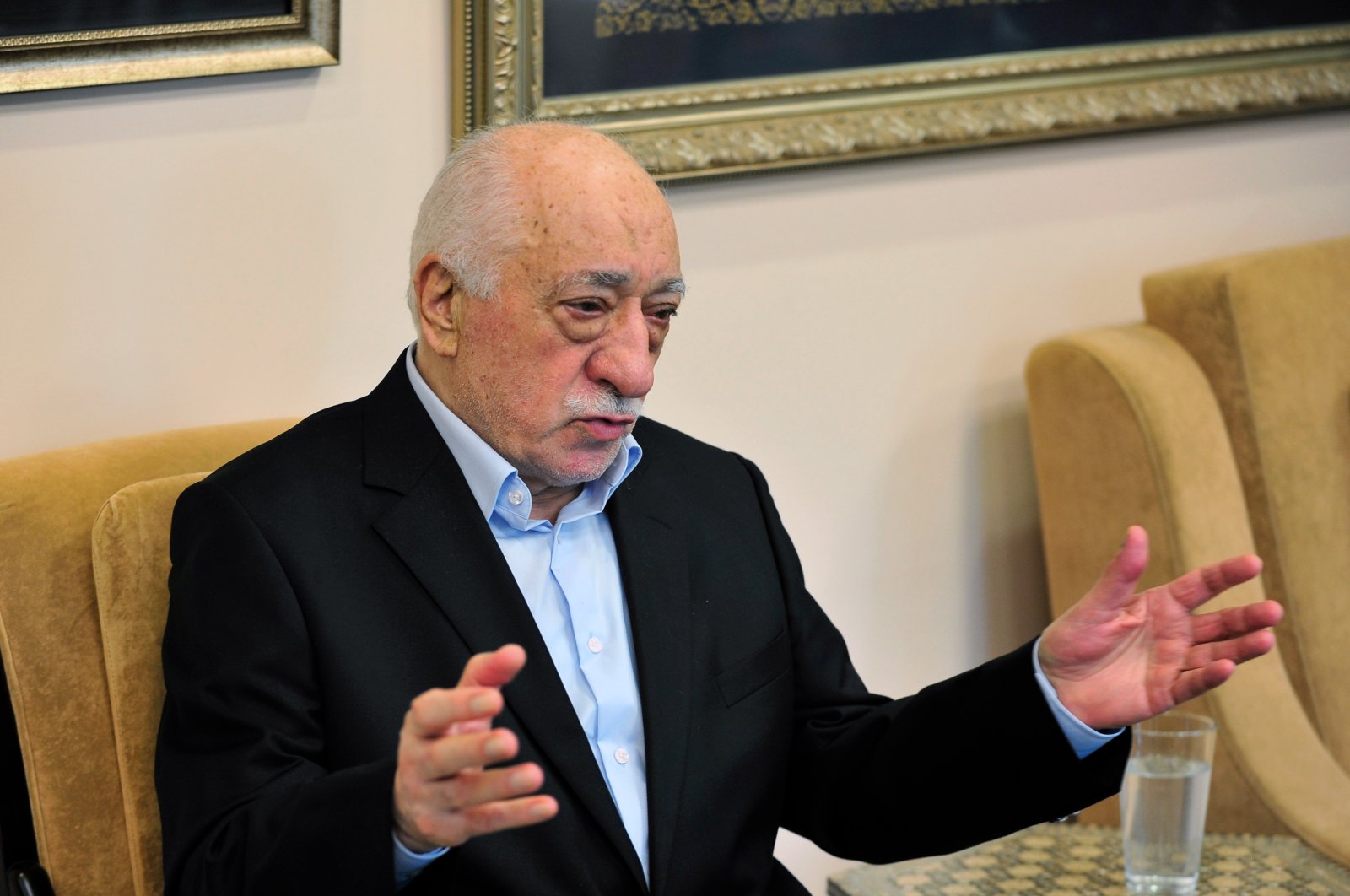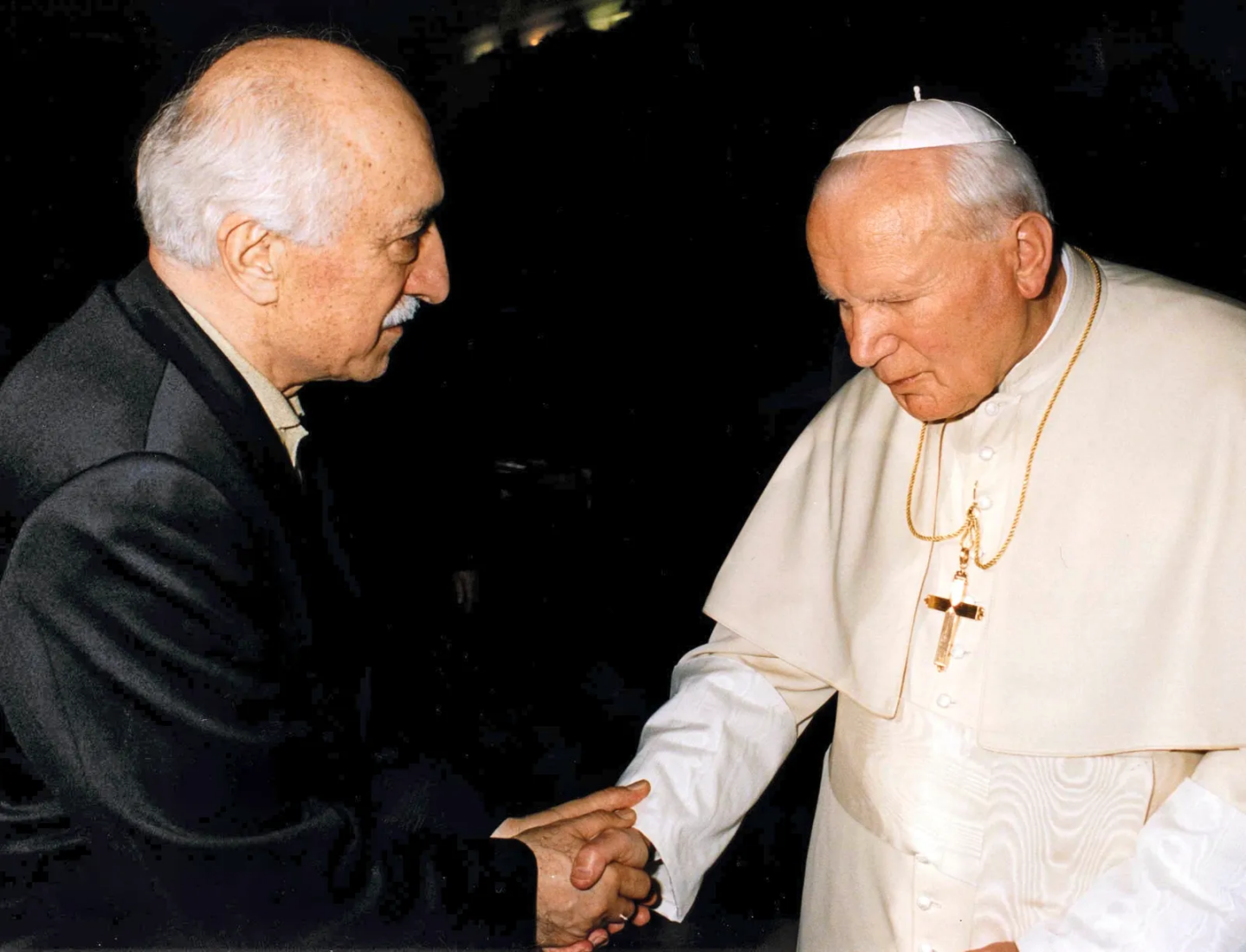
Fetullah Gulen, leader of the Fetullah Terrorist Organization (FETO), died on Monday in Pennsylvania, at the age of 83.
Türkiye had been requesting his extradition since 2016 when his terrorist group staged a failed coup attempt, but who is Fetullah Gulen?
Gulen, a so-called cleric who had been living in reclusive exile in Pennsylvania, has been leading a popular religious movement since the 1970s.
Before the failed coup and the widespread crackdown that followed, FETO and its members were accused of operating a parallel shadow government, having gained control of key state institutions, including the military and judiciary.
His past statements long before 2016 hinted that Gulen might be intending to use his power in the military to stage a coup against Türkiye's civilian government.
Gulen and his followers assert that the organization is simply a social welfare network focused on promoting education and interfaith dialogue.
However, after evidence was uncovered during the post-coup crackdown, President Recep Tayyip Erdogan officially labeled FETO a terrorist organization, identifying its members and affiliates as terrorists.
The government refers to Gulen’s movement as the Fetullah terrorist organization, or FETO.

Gulen was born in Korucuk, a village in Hasankale, in eastern Türkiye's Erzurum. He was the second oldest of eight siblings, six boys and two girls. Although his official birth date is recorded as April 27, 1941, Gulen frequently gave differing accounts of this date, casting a shadow over the details of his early life.
Gulen often attempted to present himself as a messianic figure, manipulating his narrative to suit this image. Besides altering his birth date to secure government employment, he cleverly propagated rumors to reinforce his self-styled "chosen man" persona.
According to his official website, Gulen’s actual birth date is Nov. 10, 1938 – the day Mustafa Kemal Ataturk, the founder of the Republic of Türkiye, passed away. This narrative was crafted to enhance his self-portrayed image as a person with a divine mission.
In his autobiography, Gulen's recollections of his childhood were filled with contradictions. He recalled a story involving soldiers with hats in his village in 1941, claiming to have been three years old at the time. However, the type of hat described did not enter military use until 1947, exposing inconsistencies in his accounts. Additionally, Gulen confusingly narrated being four years old in 1945, further muddling the timeline of his early years.
After his family moved to Alvar village in 1949 due to his father’s appointment as an imam, Gulen left primary school. His teacher showed particular interest in him, even promoting him to the fourth grade despite his discontinuation. During this time, his teacher once told young Gulen, “I imagine you as a young lieutenant,” a phrase that left a lasting impression on him. This aspiration to be in the military possibly influenced his later creation of a clandestine network.
In the years following his return from completing his compulsory military service, Gulen was able to establish a network upon the foundations of relationships he cultivated and skills he learned in the army.
Taking on an additional role as a voluntary imam in those years, Gulen made the first steps toward establishing what would later become a controversial religious network. He was appointed an assistant imam at Uc Serefeli Mosque in Edirne, on Aug. 6, 1959. In a large room he had built within the mosque, he initiated a cult-like structure never seen before in Edirne. During this period, his path frequently led him to the police station, but each time, he was released with just a verbal warning.
Upon his appointment as the central preacher in Izmir in 1966, he began delivering Friday sermons at Kestanepazari Mosque. On weekends, he expanded his reach to nearby towns like Aydin, Odemis, Tire, Salihli, Denizli and Isparta, conducting discussions and religious talks. This outreach was briefly halted by the March 12, 1971 military coup when Gulen was arrested for organizing a clandestine religious group based on his teachings and was imprisoned for seven months. However, the outreach resumed shortly after his release from prison, extending to Salepcioglu and Alsancak mosques.
Gulen's activities were not just limited to sermons. At Kestanepazari, he began to cultivate a group of students, using strict discipline to assert control. Despite his initial six to seven months staying in the administration building, he moved to a dedicated lodging space built later.
Fetullah Gulen began his fundraising efforts during his time at Kestanepazari. Initially, he realized that directly collecting funds for land acquisition and building projects was not effective. This led him to develop a new strategy that laid the foundation for the rapid expansion of his organization.
Instead of approaching individuals to collect funds, he opted to gather them in a setting where they could encourage one another to contribute more, leading to the establishment of a fundraising network called "himmet." The first "himmet" meeting took place on the upper floor of a store, marking the beginning of the financial backbone that would fuel the growth of the organization he was building.

The first house of what would become Gulen's terrorist network was opened in 1968 in Izmir, upon the recommendation of Izmir Mufti Ahmed Karakullukcu, serving mostly students. Gulen spent much of his time at this house, located in Tepecik, with the intention of positioning its students in critical state roles.
After two years and four months in Edremit, Gulen was reassigned in 1974 as the central preacher in Manisa. Although he wanted to be in Izmir, he settled for Manisa, continuing his sermons at Muradiye Mosque. He mostly addressed the public from this mosque.
His activities in Manisa continued until he was transferred to Izmir-Bornova in 1976. That same year, he spoke at Bornova and Hisar mosques in Izmir and traveled to other cities, including Kahramanmaras, Bursa, Elazig and Inegol. In 1977, he was assigned to Germany, where he gave speeches in various cities such as Frankfurt, Hannover, Hamburg and Munich.
On April 21, 1999, a legal case was initiated against Gulen and his organization, following a report prepared by Ankara Chief of Police Cevdet Saral and Deputy Chief of Police Intelligence Osman Ak. Just before the investigation began, Gulen fled abroad, citing "health reasons."
After relocating to the United States in 1999, Gulen sought permanent residency, a battle that lasted until 2008. Despite several rejected visa applications, he applied for an "I-140" immigrant petition in November 2006, claiming extraordinary abilities. In order to bolster his case, Gulen submitted around 30 letters of recommendation to the court. These letters included endorsements from notable figures, such as former CIA officials and American academics, who praised his educational initiatives and interfaith dialogue efforts.
Among those CIA officials were Director of Central Intelligence Analysis George Fides and former CIA officer and member of the National Intelligence Council Graham Fuller, while former U.S. Ambassador to Ankara Morton Abramowitz also provided support.
Gulen was granted a Green Card on July 16, 2008, after a lengthy legal battle with the Department of Homeland Security, largely due to the support of influential figures like Fuller and Abramowitz.
Gulen's organization, which he had carefully nurtured over four decades, grew to become a formidable structure. In a candid admission, Gulen once described how his movement infiltrated state institutions over the years, saying, "It is the right of the people of this nation to be involved in all state bodies."
Gradually, his followers gained influence, and when they felt confident, they initiated the notorious Ergenekon and Balyoz trials, both cases where groups of military officials and civilian figures were accused of planning to overthrow the government. Both cases were retried in the years to come and all sentences were thrown out due to lack of evidence.

On April 30, 2014, the National Security Council of Türkiye designated Gulen's organization as a "terrorist group," aimed at overthrowing the government. The corruption probes on Dec. 17-25, 2013, the halting of covert trucks carrying military equipment to Syria on Jan. 1 and 19, 2014, and the secret illegal recordings of then-Foreign Minister Ahmet Davutoglu were all pivotal moments leading to this decision.
On July 15, 2016, the FETO terror group launched a failed coup attempt, bombing civilians and attacking critical state institutions. The coup was foiled by the collective resistance of Turkish people. The group, now officially known as a terrorist organization, was condemned worldwide for its actions.
As the acknowledged leader of FETO, Gulen’s presence in the U.S. remained a contentious issue in U.S.-Türkiye relations. The Turkish government made numerous efforts to secure his extradition, arguing that his organization poses a threat to national security. The legal battle over his extradition has been one of the major sticking points between the two NATO allies.
In the end Gulen’s organization had expanded its reach to over 170 countries, establishing a global network of schools, businesses and nongovernmental organizations (NGOs). What began as a religious and educational movement ultimately became one of the most controversial cult-like groups in modern Turkish history.